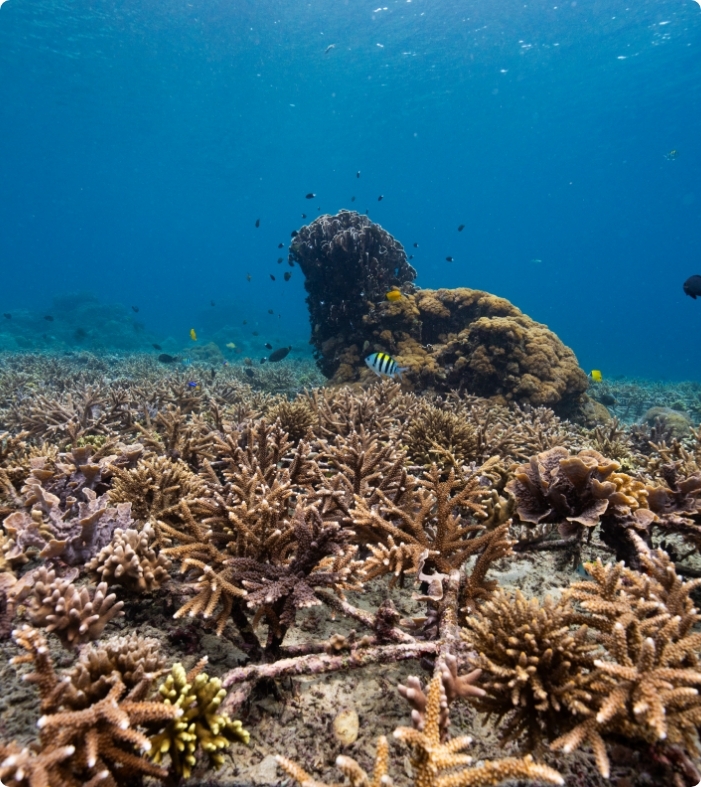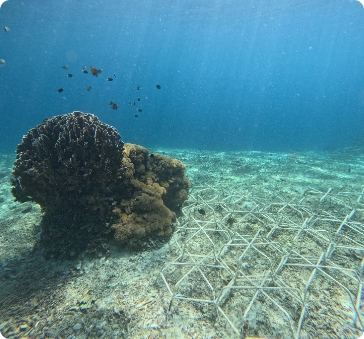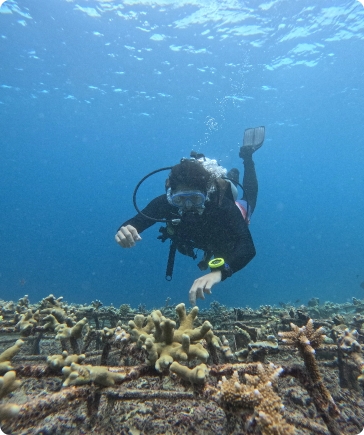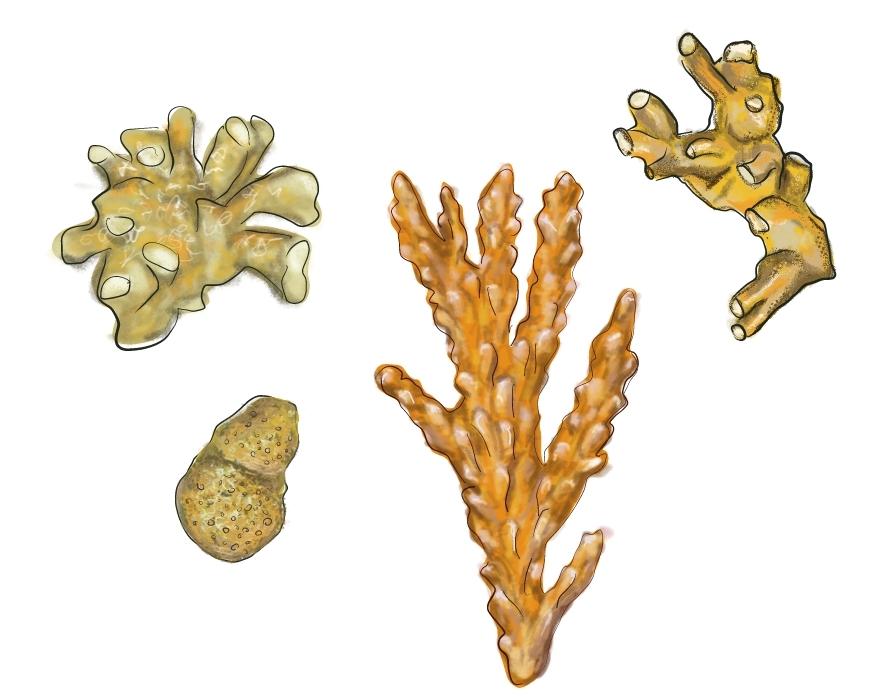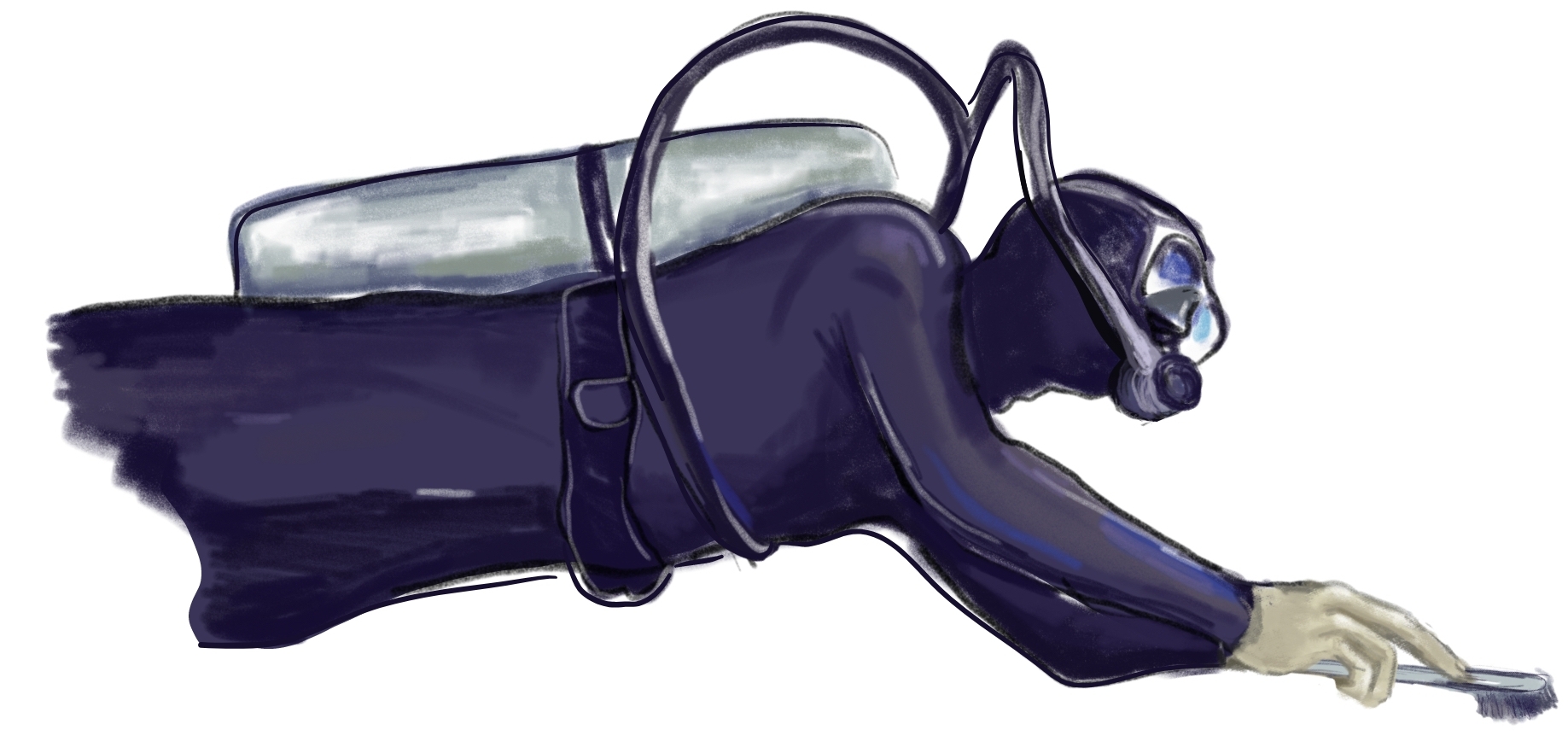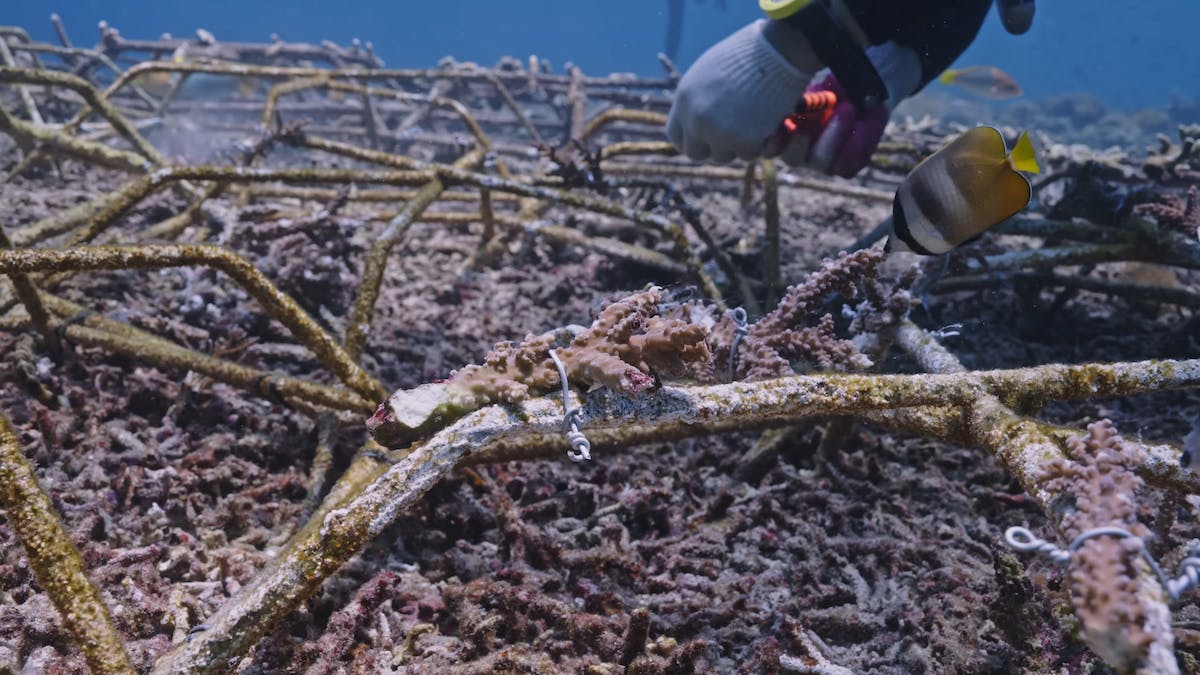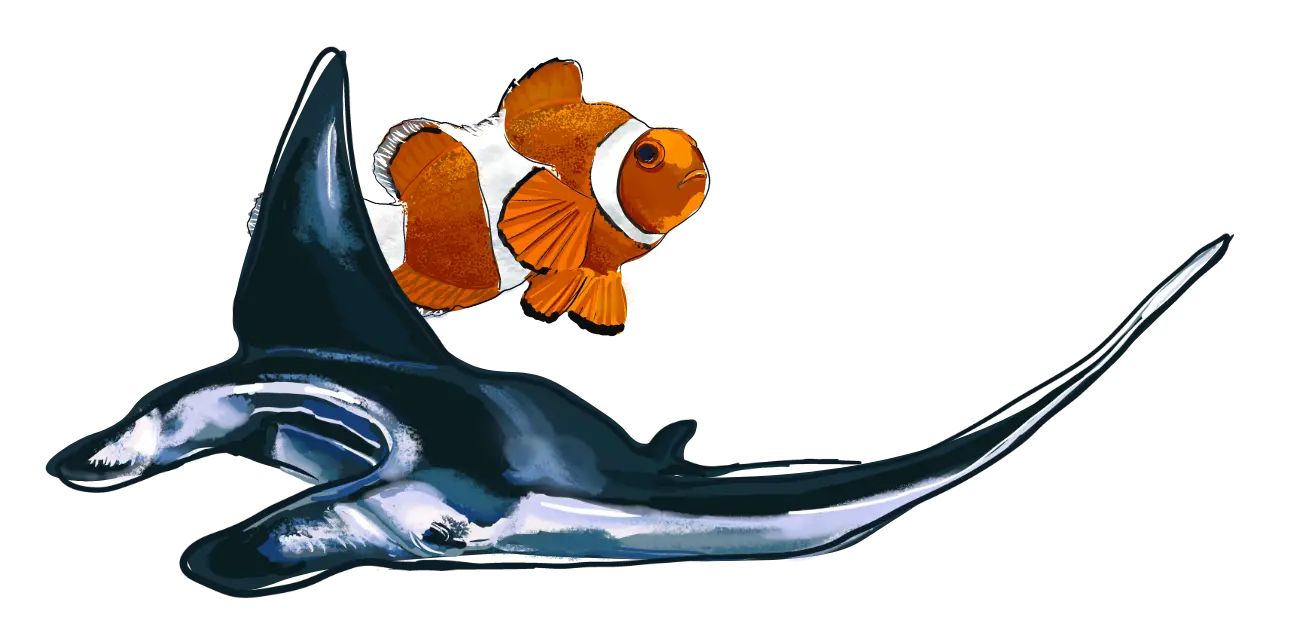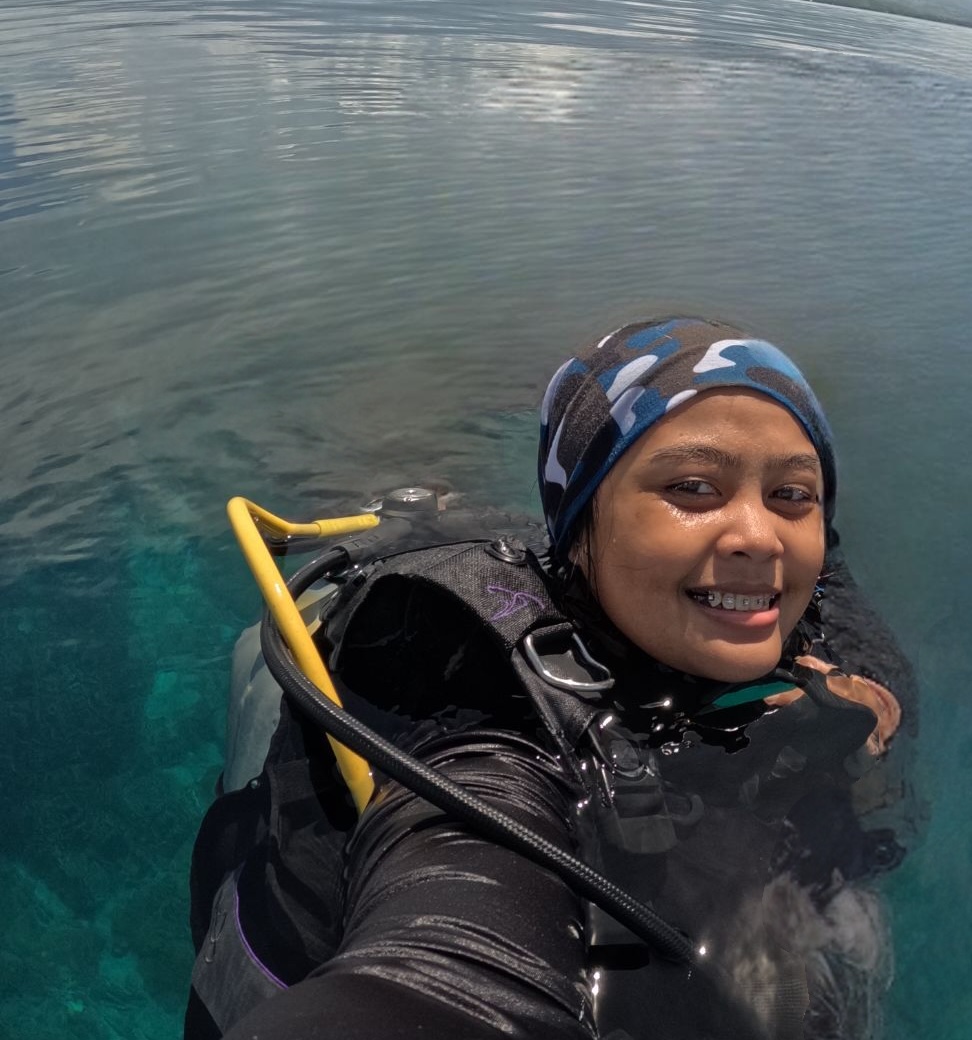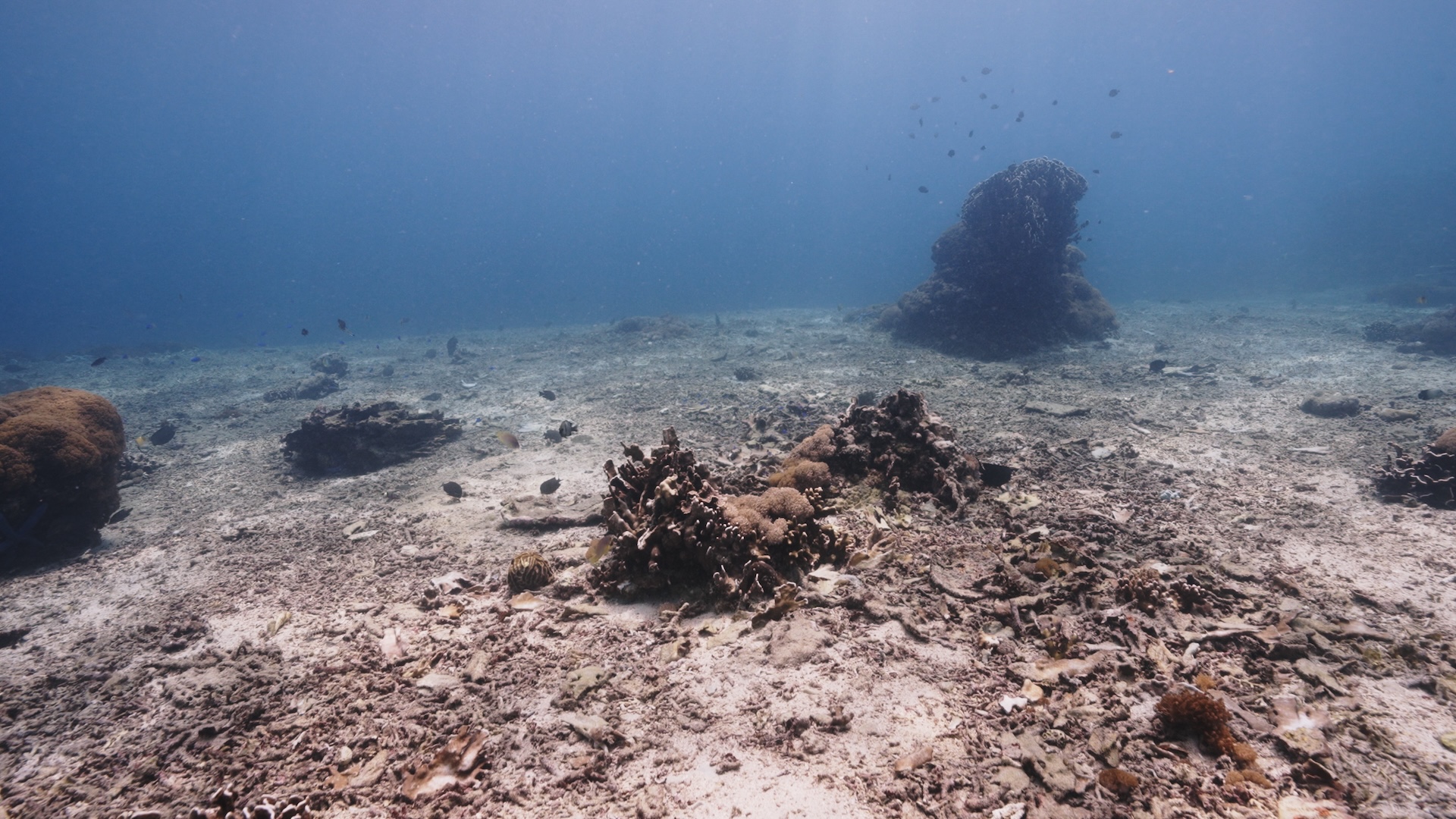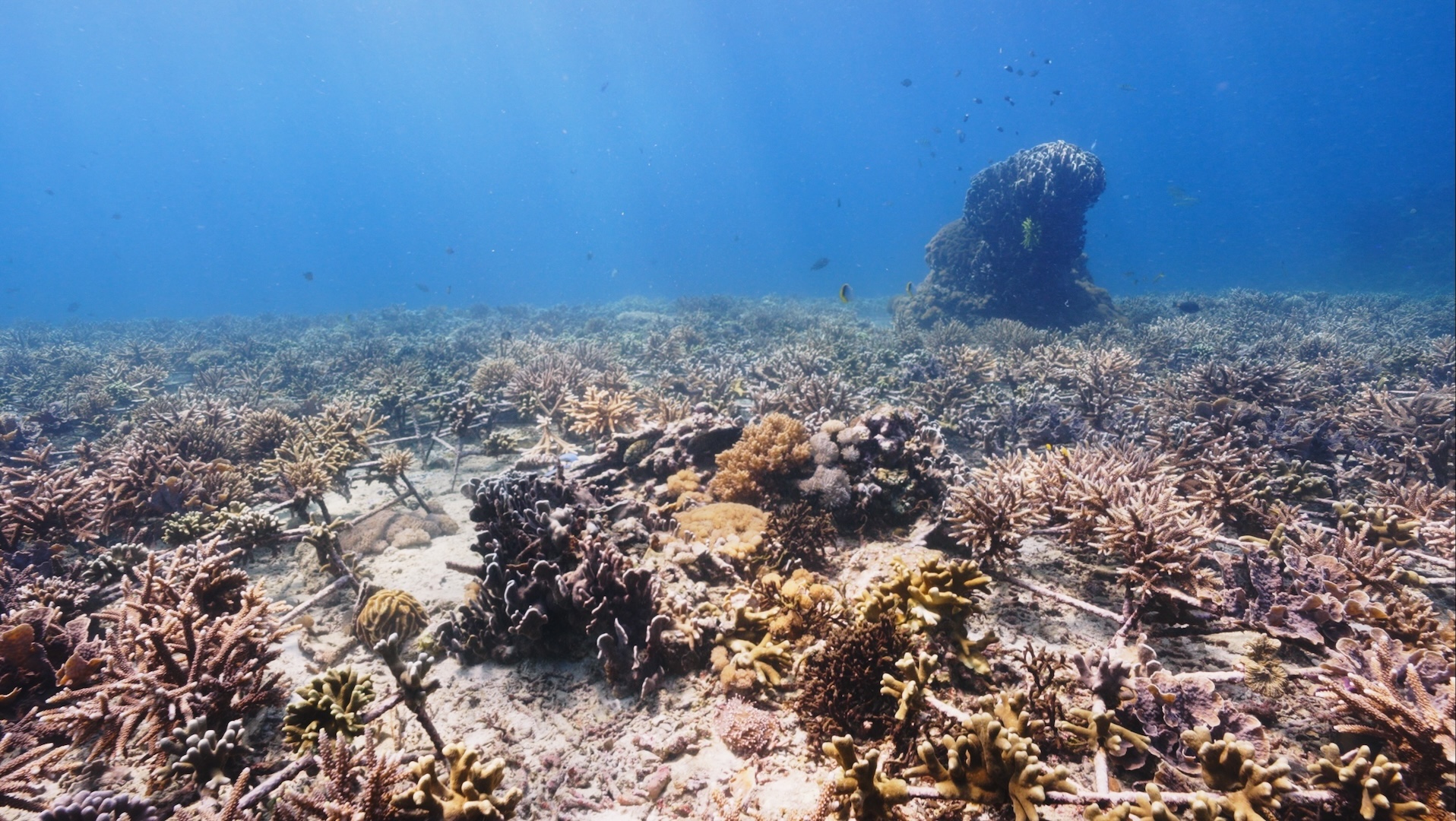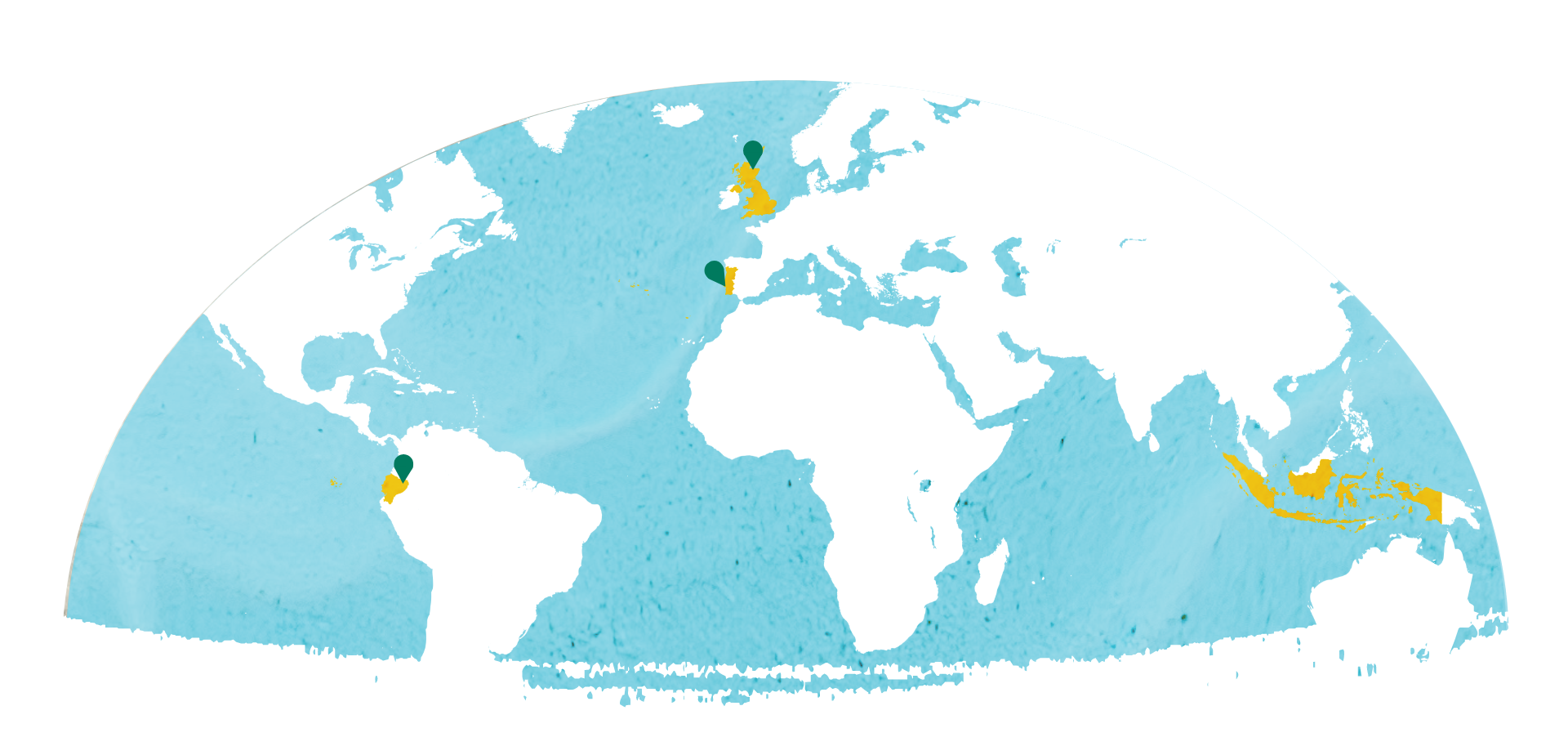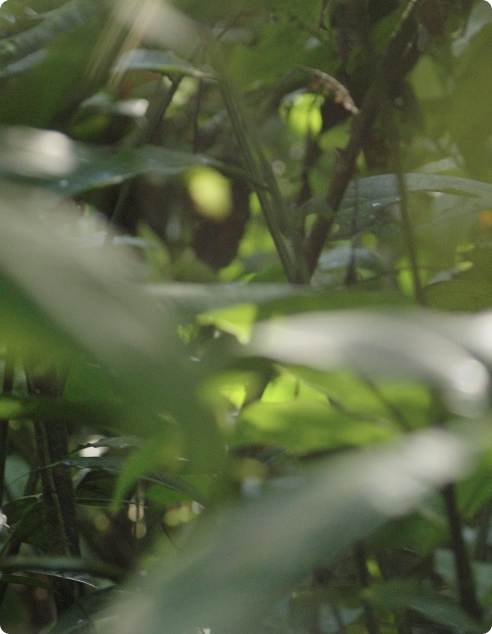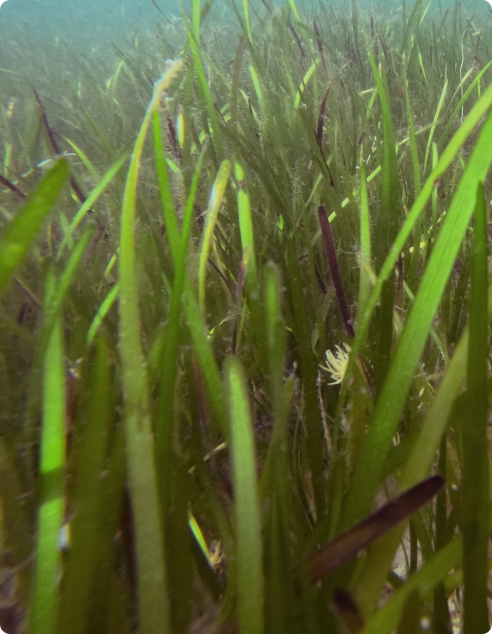Coral restoration trial
The long term aim of the project is to restore just under one hectare of reef within the MPA. Being able to trial our methods before scaling up operations has been incredibly valuable. It provides the chance to iron out the logistical teething issues around underwater deployment and monitoring. This particular patch of reef is scarred by a history of dynamite fishing, which fragments the reef and leaves patches of coral rubble that are unable to regenerate on their own.
Stages of the trial
The first step in our trial was to secure the coral rubble so it can’t damage developing coral polyps (the tiny anemone-like animals that make up coral and their reefs). Our trial used 7 hexagonal metal structures, each around 50 cm diameter, that tessellate together to form something akin to a very large net.Once the structures were secured to the seabed using stakes, we were able to collect coral fragments from the neighbouring patches of healthy reef. These fragments are naturally occurring due to environmental conditions, such as strong currents as well as the action of corallivores, like turtles and parrotfish. We then securely attached the coral fragments to the steel structures to give the reef a head start in regenerating its coral cover.
What we're checking for
Not all of the coral fragments will survive the move onto these structures so monthly monitoring is required to see how the transplanted corals are surviving. After a quick clean to remove any algae that may be starting to smother the coral fragments, each fragment is visually inspected to check for calcium carbonate deposition. Stressed corals will deposit little calcium carbonate, whereas thriving corals will be actively expanding their corallite skeleton.The initial inspection
Our latest monitoring visit shows only a couple of stressed individuals with the majority exhibiting good calcium carbonate deposition to anchor themselves onto our reef structures. We’ll be checking on them next month, but in the meantime we’re working to get everything ready for a much larger scale deployment.Keep your eyes peeled for a more detailed breakdown of our monitoring in the next field report and the full launch of the project coming soon!
